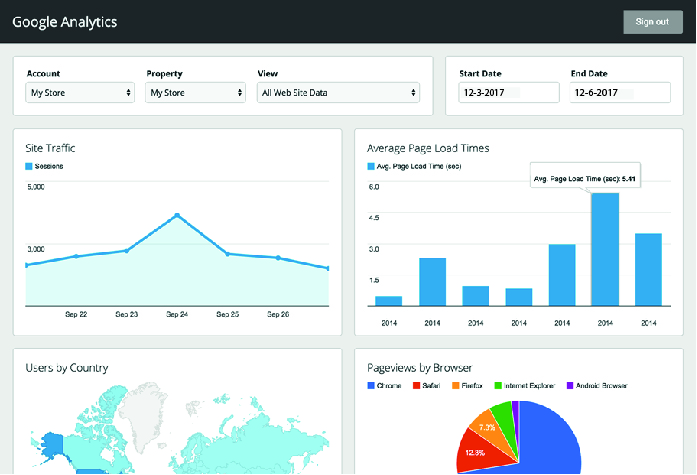
Table of Contents
ToggleWelcome to our blog to find top 10 best Web Maintenance methods for achieving your SEO objectives! In today’s competitive online market, updating your website is more than just an aesthetic consideration; it’s also critical for improving your search engine ranks and boosting organic visitors.
Creating a website for your business or service requires time, patience, and a lot of marketing knowledge. This involves a good foundation in web technology, software, marketing, graphic design, JavaScript, html, content generation, SEO, and so on.
Table of Content
- Introduction
- Understanding Website Maintenance
- Importance of Website Maintenance for SEO
- Key Tasks in Website Maintenance
- Top 10 Best Website Maintenance Practices for SEO
- 5.1 Evaluate Overall Website Performance
- 5.2 Perform User Testing
- 5.3 Domain Name Ownership
- 5.4 Performance Metrics Maintenance
- 5.5 Update Your Header, Footer, and Legal Policies
- 5.6 Link Testing for Forms
- 5.7 E-commerce Testing
- 5.8 Fixing Broken Links
- 5.9 Install Security Updates
- 5.10 Regular Website Backups
- Conclusion
FAQs:
- Why is website maintenance important?
- How often should I perform website maintenance?
- How can website maintenance benefit my SEO efforts?
Web Maintenance and its Impact
Overview: Web maintenance is the process of upgrading and conducting a website on a regular basis to ensure that it stays functional, secure, and performance optimised.
Maintaining a good ranking on search engine results pages (SERPs) is critical for increasing organic traffic to your website. Web Maintenance is critical for ensuring that your site stays search engine optimised, increasing its exposure and accessibility to potential users. Here’s how.
- Content Freshness: Making regular changes and additions to your website’s content indicates to search engines that your site is current and relevant.
- Technical Optimisation: Web maintenance include correcting technical issues such as broken links, page errors, and sluggish loading times, all of which can have a detrimental influence on SEO performance.
- User Experience: Search engines prioritise websites that offer a positive user experience, as seen by bounce rate, time on site, and engagement metrics. Web maintenance aims to improve the user experience by simplifying design components, improving site navigation, and increasing page load speed.
Top 10 Best Website Maintenance Practices

These practices cover many elements of Web Maintenance, such as mobile responsiveness, and user experience improvements. By efficiently applying these strategies, website owners may increase their site’s exposure, ranking, and general performance in search engine results pages (SERPs), allowing them to achieve their SEO objectives.
1. Evaluate the overall website performance
Evaluate website performance in terms of how it works for users, all of whom are prospective customers. Does it keep people on your site for an extended period of time? Features of Evaluation are given below:
- Nice, eye-catching design
- Engaging material that conveys a narrative.
- Organic search rankings
2. Perform User Testing

User testing in online maintenance is analysing website usability and functioning through real-world user interactions, which aids in identifying areas for improvement and improving SEO by optimising user experience.
3. Domain name ownership

Domain name ownership is crucial for Web Maintenance. It entails periodically verifying your domain’s renewal status to avoid inadvertent lapses. Failure to renew a domain can result in its instant inactivity, disrupting website services and company activities. Maintaining ownership guarantees continuous access and operation, protecting your web presence and business continuity.
4. Performance metrics maintenance
Performance metric maintenance include monitoring and optimising important metrics linked to website performance, such as page load speed, server response time, and overall responsiveness. By frequently monitoring and fine-tuning these indicators, website owners may assure an ideal user experience, increase search engine ranks, and boost overall site performance. Here’s a checklist of factors to examine when assessing the efficiency of your website:
- Total traffic figures
- Organic traffic Bounce rate.
- Average time spent on your website and page views per visit.
5. Update Your Header and Legal Policies
Your website header will most likely include your logo, address, phone number, and hours of operation. It may also include the menu for your website or taglines under your company name. Keeping the header up to date is critical.
You want your website visitors to recognise your company by the name and emblem shown there, get a sense of what you do, and stop by while you’re open for business. The header is also an excellent area to promote the various company types. Headers should be verified for accuracy to avoid losing reputation and money. Many businesses have “About Us” or “Contact Us” or “Directions” buttons in their footers.
6. Link Testing for Forms
Testing links to form is verifying that all links leading to forms on your website work properly and route people to the desired destination. This method contributes to the usability and accessibility of your website, resulting in a pleasant user experience and perhaps enhancing your site’s search engine results.
When consumers fill out and return online website forms, it helps to create leads for your business or service. Leads can turn into sales.
Topic 7: E-commerce Testing
Ecommerce testing is the process of analysing an online store’s functionality, usability, and performance in order to provide customers with a smooth purchasing experience. This process involves testing elements such as product search, checkout process, payment gateways, and general site performance in order to discover and resolve any issues that may affect sales and customer happiness.
If your website has an eCommerce function, you should ensure that the sale is easy to execute. Purchase one item or two on a variety of digital devices and browsers to ensure that the transaction is successful. You might lose money if you don’t identify and promptly correct a mistake in your buying function.
Topic 8: Fixing Broken Links
Broken links are hyperlinks on your website that point to non-existent or unavailable pages. Broken links can have a detrimental influence on your website’s SEO performance. Fixing broken links entails finding , fixing or eliminating them in order to provide a consistent user experience and maintain your site’s reputation with search engines.
Maintain and update your hyperlinks. Avoid sending a user or potential consumer to outdated material. Keep your links up to date, functional, and relevant to your call to action.
9. Install Security Updates
Security updates in Web Maintenance include constantly installing patches, fixes, and steps to secure your website from cyber attacks, assuring data safety, and strengthening trustworthiness, which is critical for maintaining and improving SEO performance.
Make sure to install any newly available updates or patches for your website security programmes. Check for vulnerabilities on a monthly basis. Do everything is necessary to keep your website and its users secure.
10. Regular Website Backups
Website backup is the process of making copies of your website’s files and data to defend against data loss or damage. Part of maintaining and adhering to best website practices is ensuring that you and your business do not lose all of your valuable work.
There are various website backup options available today. Some are automatic, requiring no thought at all. Others demand that you manually backup your website. In any case, backing up your website and storing all of your hard work and client information should be on your calendar at least once a month, if not more frequently.
Conclusion
To summarise, Executing these top Web Maintenance practices is about more than simply keeping your site functioning well; it’s about staying ahead of the competition and meeting your SEO objectives. Prioritising duties such as frequent updates, performance monitoring, speed and mobile optimisation, and security ensures not just a better user experience but also signals to search engines that your website is a credible source of information.
Frequently Asked Questions ( FAQ’s )
Website maintenance is vital for keeping your site safe, performing effectively, and up to date with the newest content and technology, eventually improving user experience and SEO performance.
Factors such as site complexity and traffic influence the frequency of website maintenance. To keep your website working effectively, execute maintenance duties on a regular or quarterly basis.
Website maintenance has a direct influence on SEO by increasing characteristics such as website speed, mobile friendliness, security, and content freshness, all of which lead to higher search engine results and more organic visitors.





